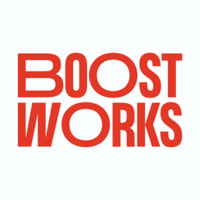Connecting deskless workers: Tangible steps to drive up your employee benefits usage
Boostworks’ Beyond the Salary Slip research report (2024) found that only 40% of employee benefits are used, demonstrating that there’s an urgent need for UK employees to connect individuals with their perks.
In particular, connecting deskless workers to their employee benefits is an ongoing challenge for employers in a world where employee benefits were traditionally built to cater to desk-based job types.
Sometimes referred to as ‘frontline’, these deskless roles are typically prevalent in sectors such as retail, healthcare, hospitality, manufacturing, construction and more.
Not being connected to a work device day-to-day or perhaps even having a work email address, deskless workers require extra consideration and a tailored approach to ensure barriers to access are removed.
Here are some of the ways that your business can address this challenge:
Step 1 - Understand the barriers
We must elevate the conversation to consider how benefits can truly meet the needs of this often-overlooked population.
At Boostworks, we’ve found that a framework built around awareness, accessibility and personalisation offers a powerful lens for diagnosing challenges and identifying opportunities for transformation:
- Awareness: Are your deskless workers aware of what’s available to them? Traditional communication channels often fail to reach those without regular access to email or internal platforms.
- Accessibility: Even if they know what’s offered, how easily can they access these benefits? The user experience must align with the realities of frontline work environments.
- Personalisation: Are the benefits truly relevant? They need to reflect the diverse needs and preferences of this group.
By identifying and addressing these specific barriers, businesses can move from passive provision to active enablement - unlocking higher engagement, loyalty, and wellbeing across the deskless workforce.
The opportunity is clear: by evolving how we think about benefits for deskless workers, we can create a more equitable, connected and high-performing workforce.
Step 2 - Focus on the right communication channels
How you bring your benefits to the attention of deskless workers matters and impacts long-term usage.
Relying solely on email as your core channel of communicating about your employee benefits won’t be effective, particularly if you’ve identified that your deskless workers aren’t using their company email addresses regularly. Instead, effective comms channels for this group could be:
- SMS
- Team meetings / 1:1 with managers
- Print assets in physical workspaces like posters and flyers
- Benefits roadshows
Step 3 – Equip managers to be your benefit champions
Managers play a pivotal role in driving awareness and access of employee benefits, beyond the use case of just addressing deskless workers.
With a direct line of communication with team members, being in a position of influence and also (more than likely) having an additional level of information about the benefits available, means that managers can actively support your initiative to drive up benefits access among deskless colleagues.
Managers should consistently encourage benefits usage throughout the year, particularly at relevant points in the year.
Step 4 – Prioritise a mobile experience and access journey
Access is often the biggest barrier when it comes to deskless workers because many aren’t using a work device at all during their working day, which relies on them taking the time outside of work to access their benefits. Instead, bring your benefits to the devices they are using such as their phones.
A seamless, native mobile experience is a fundamental requirement for any employee benefits strategy to drive engagement and keep up with current consumption habits for digital content.
What this looks like in real terms is having a mobile app your employees can download and log into to access their benefits and rewards any time. This creates a frictionless process that means employees are far more likely to access their benefits in their personal time, making it habitual.
Step 5 – Provide a personalised package and experience
Personalisation is critical to benefits usage – and this includes both the content and communication.
Individuals are far more likely to use their benefits when they feel the perks available resonate with their individual needs, whether that’s menopausal support, mortgage advice or gym memberships.
Having a rich package that’s been tailored to your workforce’s needs and interests will increase the chance that deskless workers, and other workers too, will take the time to connect with their benefits outside of work.
When it comes to communication, leveraging data to provide personalised recommendations, reminders and content can make the difference between a benefit being seen as a generic perk or a genuinely valued support that an individual is driven to engage with.
Final thoughts
Ensuring benefits genuinely make a difference to deskless workers requires businesses to collaborate with their providers to ensure that awareness, access and personalisation are considered to remove as many barriers as possible.
When employers get accessibility, awareness and personalisation, the result is an employee benefit value proposition that not only supports the whole employee but also drives meaningful engagement, loyalty and wellbeing at scale.
Supplied by REBA Associate Member, Boostworks
We’re the people that help people thrive.








